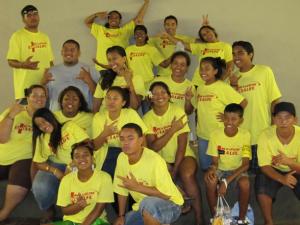Medical school awarded $1.4 million to fight youth suicide
Ten year climb in teen suicide rate in islands
University of Hawaiʻi at MānoaContact:
Tina M. Shelton, (808) 692-0897
Director of Communications, Office of Dean of Medicine
Deborah Goebert, (808) 586-7433
Associate Professor of Psychiatry
Director of Communications, Office of Dean of Medicine
Deborah Goebert, (808) 586-7433
Associate Professor of Psychiatry
Posted: Sep 8, 2011
With rates of youth suicide in Hawai‘i on the rise in the last decade, the University of Hawai‘i Mānoa medical school has been awarded $1.4 million to intervene as early as possible in childrens' lives to prevent suicide.
A measure of how serious Hawai'i's problem has become, the medical school's three-year award is part of more than $45 million being allocated to support state-wide suicide prevention efforts.
“These federal funds not only build on our existing suicide prevention efforts in Hawai‘i; they allow us to be innovative and focus on the strengths of our communities,” stated Project Director Deborah Goebert, Associate Professor of Psychiatry at the John A. Burns School of Medicine.
According to 2009 Youth Risk Behavior Survey completed by public middle and high school students:
- Hawai‘i had the highest percent reporting “seriously considered attempting suicide,” at 18.9%;
- Hawai‘i had the highest percent reporting, “made a suicide plan,” at 16.0%;
- Hawai‘i had the highest percent reporting, “attempted suicide,” at 12.9%; and
- Hawai‘i had the 4th highest (among 40 states) percent reporting “suicide attempts treated by a doctor or nurse,” at 4.5%.
Hawai‘i youth living in rural communities have significantly higher rates of suicide attempts than urban communities. Native Hawaiian youth are among the highest at-risk for suicide-related behaviors in the U.S., as compared to the other major ethnic groups in the nation.
“The loss of a young life to suicide is an immeasurable tragedy for individuals, families and communities – made all the worse by the fact that it is preventable,” said Pamela S. Hyde of the Substance Abuse and Mental Health Services Administration (SAMSA), the federal funding agency. “That is why these grants are a crucial part of a nationwide effort to get the word out to all youth that there are places they can turn to for help at any time.”
The Hawai‘i’s Caring Communities Initiative will complement Hawai‘i's current statewide prevention efforts by mobilizing at-risk communities and enhancing the statewide trauma network.
With a number of partners throughout the state, such as the Hawai‘i Department of Health, state and island suicide prevention task forces, local hospitals, and community organizations, Hawai‘i’s Caring Communities Initiative will increase public awareness of suicide and assure services for high-risk youth.
FOR IMMEDIATE HELP: The Hawai‘i Department of Health’s ACCESS Line provides a team of trained and experienced professionals 24 hours a day to help to you or a family member in times of mental health crisis. On O‘ahu, call 832-3100. On the neighbor islands, call toll-free at 1-800-753-6879. The National Suicide Prevention Lifeline at 1-800-273-TALK (8255) is a free, 24-hour hotline available to anyone in suicidal crisis or emotional distress.
For more information, visit: http://www.samhsa.gov

